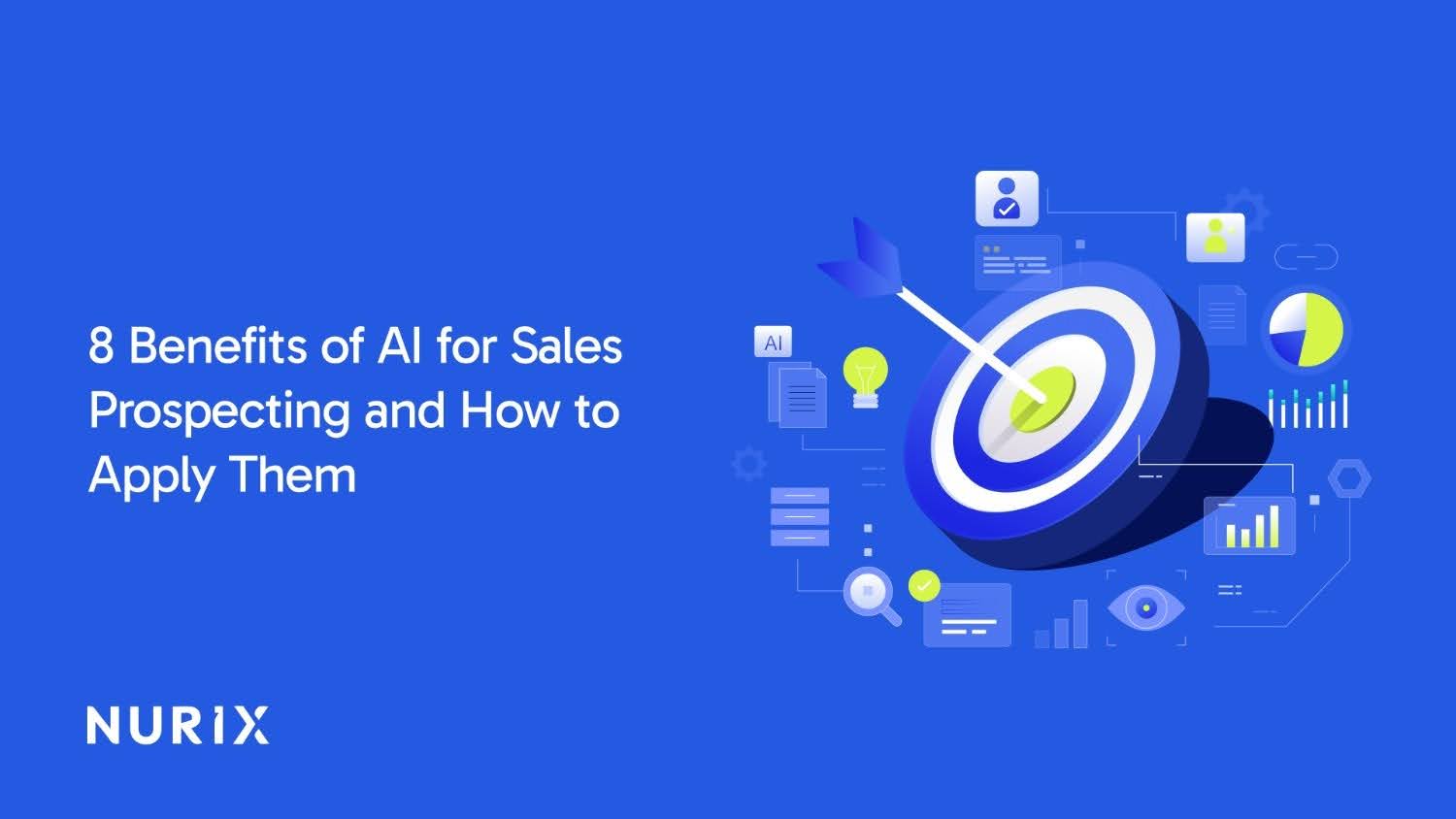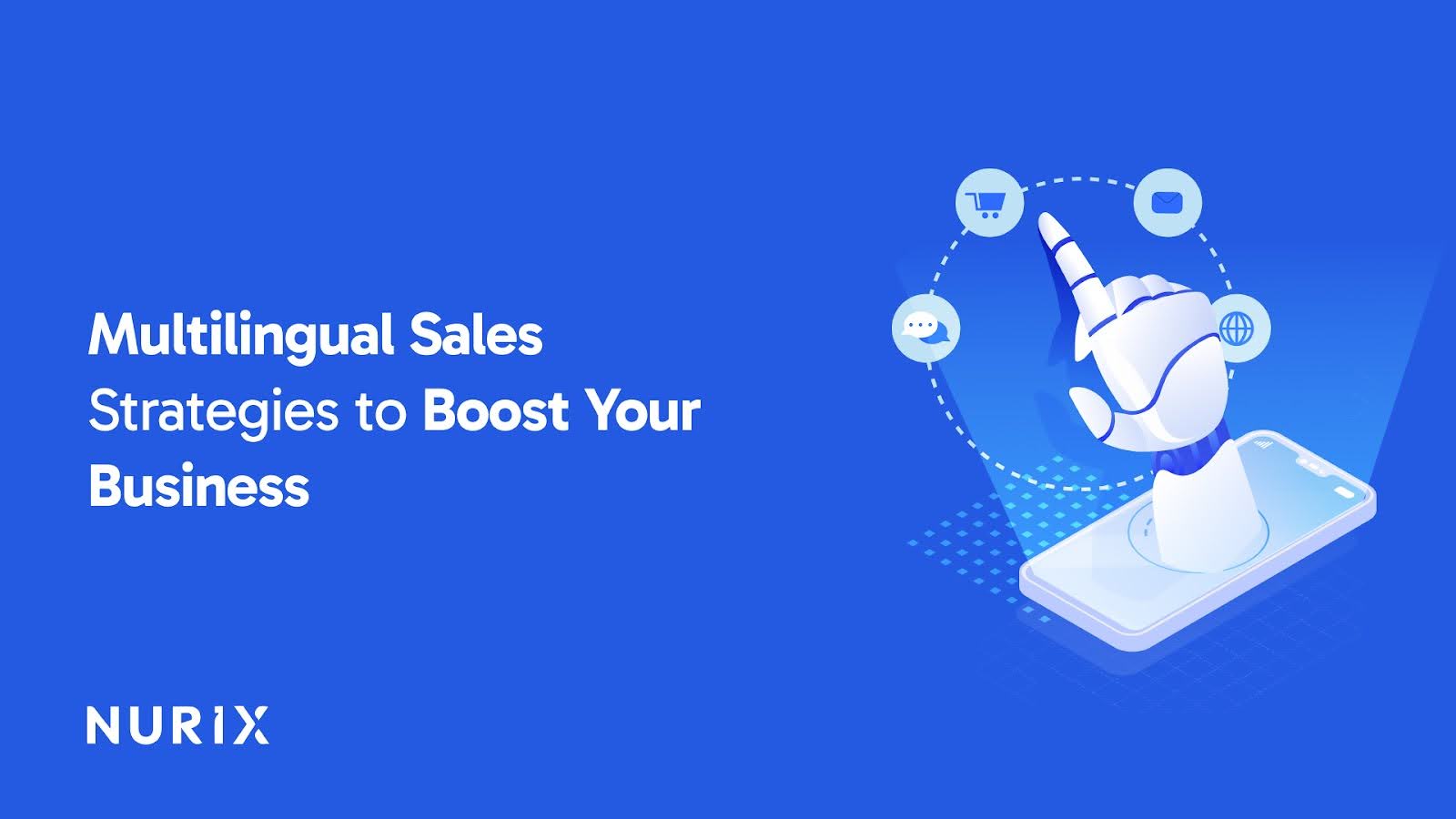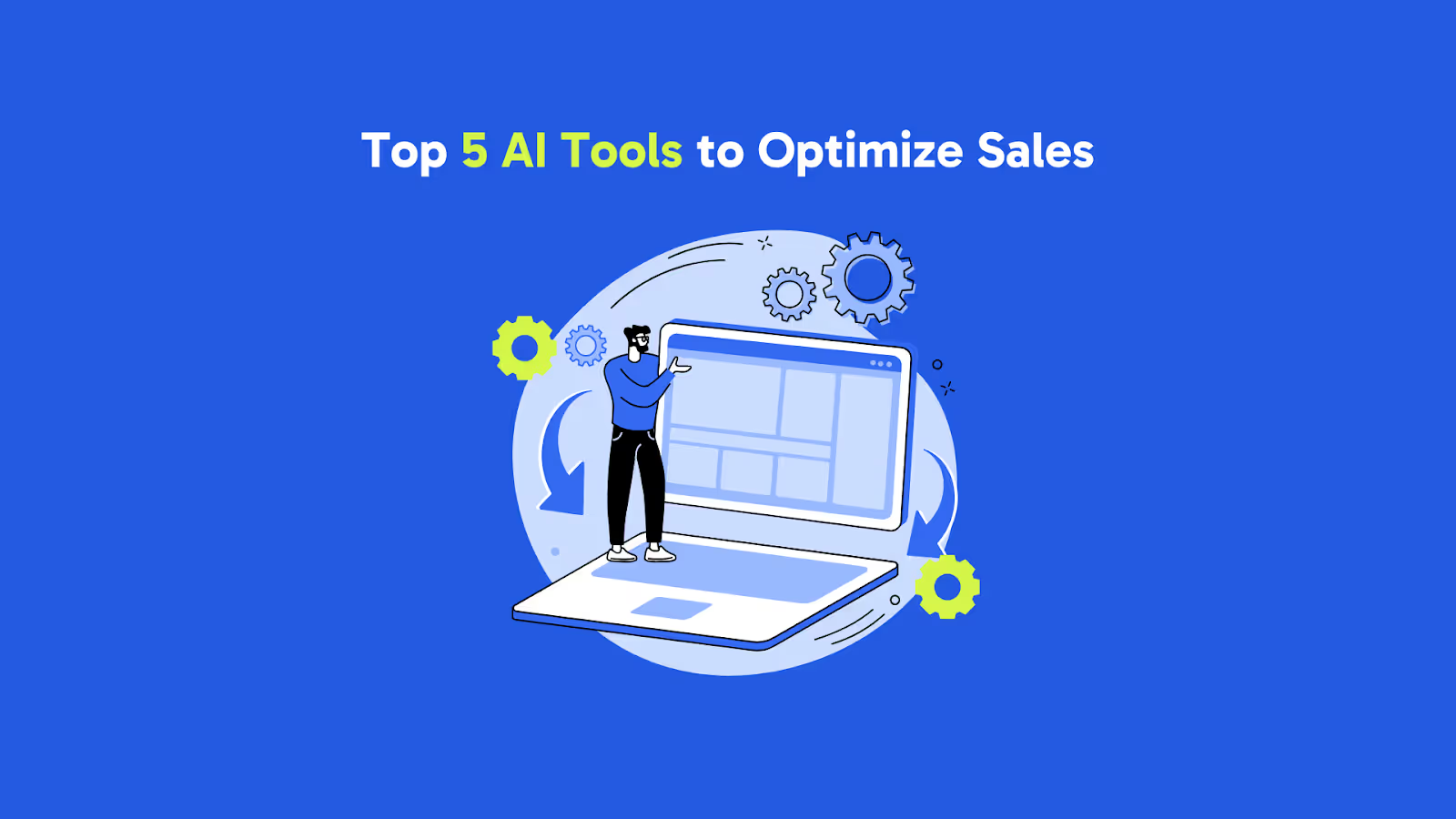Most sales teams agree that lead qualification often feels like a moving target. Reps chase hundreds of inquiries, yet only a handful convert into meaningful opportunities. Data sits in silos, follow-ups depend on timing and luck, and high-potential leads slip away unnoticed.
This is where AI Agents for Lead Qualification step in, offering real-time engagement, contextual responses, and continuous learning to separate genuine buyers from casual visitors. For enterprises managing thousands of leads daily, the difference lies in how these agents process, prioritize, and personalize every interaction.
In this guide, we’ll look at how AI Agents for Lead Qualification are changing how enterprises capture, assess, and convert leads with measurable business outcomes.
Key Takeaways
- AI Agents Redefine Lead Accuracy: AI Agents for Lead Qualification process and score thousands of leads instantly, identifying genuine buyers with precision beyond traditional rule-based methods.
- Enterprises Overcome Manual Bottlenecks: Automation eliminates lag from form submissions, data entry, and routing, allowing faster engagement and improved conversion rates without expanding sales teams.
- Industry Applications Prove Tangible ROI: From banking to healthcare and retail, enterprises report measurable outcomes, reduced costs, higher conversions, and shorter sales cycles using AI-driven qualification.
- Data Consistency Drives Sales Confidence: Unified CRM and marketing data sync prevents lead duplication, supports context-aware conversations, and keeps qualification logic aligned across global departments.
- Nurix AI Turns Conversations into Revenue: Nurix AI Voice Agents detect intent, qualify leads, and update CRM data in real time, helping global teams scale conversions and lower acquisition costs.
Why Lead Qualification Needs a Rethink in the Enterprise World
Enterprises manage lead volumes that grow faster than their ability to evaluate them correctly. Outdated workflows and disconnected systems cause strong opportunities to be overlooked while unqualified leads consume sales resources.
These challenges are driven by data inconsistencies and operational silos that make accurate, large-scale lead qualification difficult to sustain.
- Slow Lead Response Times: Manual screening processes delay engagement. Leads submitted through forms or inbound calls often sit in queues, losing momentum before a sales rep can respond.
- Fragmented Data Sources: Lead data sits across CRMs, marketing automation tools, and ad systems with limited sync. This fragmentation prevents complete profiles and accurate scoring.
- Inconsistent Qualification Rules: Different departments apply different scoring logic. Marketing may prioritize engagement metrics, while sales looks at deal size potential, causing misaligned priorities.
- Limited Coverage Beyond Business Hours: Traditional teams can’t assess or follow up after office hours. High-intent leads arriving overnight often go cold before human review.
- High Manual Overhead: Sales development reps spend large portions of their time cleaning data and verifying contact information instead of engaging ready prospects.
- Weak Lead Handoff Visibility: Once a lead is marked “qualified,” there’s little clarity on its movement to sales. Missed follow-ups or duplicate outreach are common.
- No Real-Time Feedback Loop: Without real-time insights, qualification rules remain static. Teams can’t quickly detect quality drops, campaign mismatches, or growing buyer patterns.
What “AI Agents For Lead Qualification” Really Means in Practice
AI agents are not limited to chat interfaces or rule-based scoring systems. They function as context-aware systems that interpret engagement signals, intent, and verified data in real time.
In practical use, these agents bring structure, speed, and consistency to qualification while maintaining continuity across marketing and sales ecosystems.
- Real-Time Lead Assessment: AI agents evaluate incoming leads instantly across web forms, campaigns, and calls, scoring them based on engagement patterns, firmographic fit, and verified contact reliability.
- Cross-System Data Sync: They integrate with CRMs, marketing tools, and analytics platforms, creating unified profiles. This eliminates data silos and supports context-rich qualification without manual reconciliation.
- Dynamic Scoring Adjustments: Instead of static rules, agents refine scoring logic continuously as new behavioral data appears, updating lead rankings in real time based on verified outcomes.
- Automated Follow-Up Triggers: Once qualified, agents automatically schedule handoffs, send follow-up prompts, or update CRM statuses. This reduces human dependency while preserving accountability across departments.
- Context-Aware Interaction: Agents can engage prospects through chat, email, or voice using contextual cues from prior interactions, maintaining consistency in tone and relevance throughout engagement.
- Prioritization for Sales Teams: High-value leads are surfaced to sales instantly with detailed context, purchase intent signals, company background, and conversation summaries, reducing manual prep work.
- Continuous Learning from Outcomes: Agents monitor closed-won and closed-lost data to refine qualification parameters, improving accuracy over time based on real pipeline performance.
Industry-Specific Use Cases Across Key Sectors
AI agents adapt to how each industry captures and qualifies leads. The impact depends on available data, regulatory conditions, and how sales or service teams act on insights.
Below are practical applications showing how enterprises across major sectors use AI agents to strengthen lead quality, accelerate engagement, and improve conversion accuracy.
1. Manufacturing
Real-time anomaly detection prevents equipment failures before they disrupt operations. AI analyzes sensor data from machinery, identifying early-stage degradation patterns to schedule repairs during planned downtime rather than during peak production.
Key Benefits:
- Equipment downtime reduction: Machine learning algorithms detect vibration, temperature, and pressure anomalies early, allowing technicians to address issues proactively and maintain assembly line flow.
- Extended asset lifespan: Condition-based maintenance replaces rigid time-based schedules, replacing parts only when justified by actual equipment condition rather than arbitrary intervals.
- Maintenance cost efficiency: Precise scheduling eliminates unnecessary part replacements and emergency repairs, which carry premium labor and expedited shipping costs.
2. Banking & Financial Services
AI-powered voice and text interfaces handle 24/7 customer inquiries across messaging apps, websites, and mobile platforms, providing account balance checks, fund transfers, and bill payments without human agent involvement. This approach maintains smooth escalation to specialists for complex issues.
Key Benefits:
- Routine inquiry resolution speed: Instant automated responses eliminate customer wait queues; conversational AI executes transactions instantly compared to manual processing.
- Operational cost reduction: Automating high-volume interactions frees agents to focus on complex, value-driven cases rather than repetitive inquiries.
- Improved customer lifetime value through personalization: AI analyzes transaction patterns and financial behavior to suggest customized investment plans, credit products, and savings accounts aligned with individual risk tolerance.
3. Healthcare
Pattern-recognition algorithms identify suspicious claim submissions by analyzing billing patterns, provider behavior, and historical claim data. The system flags anomalies for investigation while processing legitimate claims faster, protecting payer budgets, and reducing claim processing time.
Key Benefits:
- Improved fraud detection capability: Machine learning models identify subtle fraud indicators that traditional rule-based systems overlook, catching schemes across multiple claims.
- Administrative cost reduction: Automated claim scoring and triage direct resources to high-risk cases, eliminating manual review of straightforward submissions.
- Claim accuracy improvement: Advanced ensemble methods reduce false positives, guaranteeing a legitimate claims process without delay.
A growing medical weight loss brand struggled to manage a surge in leads. Nurix AI Voice Agents automated qualification, maintained consistent outreach, and prioritized ready-to-convert clients, cutting costs by 70% and boosting conversions by 10%.
4. Retail & E-Commerce
Machine learning models analyze historical sales, seasonality, social media trends, external promotions, and weather patterns to predict product demand at granular levels, by SKU, store location, and timeframe. Automated replenishment systems adjust inventory in real-time, matching stock to anticipated demand.
Key Benefits:
- Sales optimization through stock availability: Accurate forecasts reduce stockouts on high-demand products, capturing sales that competitors miss through inventory shortages.
- Inventory holding cost reduction: Excess stock decreases when demand predictions account for promotional timing, seasonality, and regional preferences.
- Waste and obsolescence prevention: Predictive models identify slow-moving inventory early, allowing strategic clearance or redistribution before products expire or fall out of fashion.
5. Logistics & Supply Chain
Real-time routing algorithms factor in live traffic data, weather conditions, vehicle capacity, and delivery windows to generate optimal routes. The system continuously updates as new orders arrive, reducing fuel consumption and delivery time without increasing fleet size.
Key Benefits:
- On-time delivery performance: Real-time adjustments to route sequencing prevent time-based penalties and improve on-time delivery performance against service-level agreements.
- Transportation cost reduction: Optimized routes cut fuel usage, overtime labor, and vehicle wear-and-tear by eliminating circuitous paths and empty-leg returns.
- Supply chain visibility improvement: Predictive demand signals allow logistics providers to position inventory closer to forecast demand hotspots, reducing lead times.
6. Energy & Utilities
Machine learning models analyze historical consumption patterns, weather forecasts, time-of-day trends, and external factors (solar/wind generation variability) to predict electricity demand hours or days ahead. Grid operators use predictions to balance supply, avoid blackouts, and optimize renewable energy integration.
Key Benefits:
- Supply-demand balance optimization: Accurate forecasts allow utilities to match generation capacity to demand, preventing expensive last-minute adjustments and fossil fuel backup activation.
- Renewable energy integration capability: Predictive analytics forecast solar and wind variability, allowing grid operators to confidently deploy renewables without sacrificing stability.
- Peak pricing and emergency generation cost reduction: Demand forecasting allows utilities to avoid expensive peak-hour purchasing and reduces reliance on costly backup generation.
7. Telecommunications
AI models analyze CRM data, usage patterns, billing history, and support interaction sentiment to identify subscribers at imminent risk of switching providers. Telcos execute targeted retention offers, loyalty discounts, service upgrades, and priority support before customers defect.
Key Benefits:
- Customer churn rate reduction: Early intervention with personalized retention offers prevents subscription cancelations before they occur, improving customer lifetime value.
- Retention offer return on investment: Targeting high-risk customers with precise intervention reduces wasted promotional spending on satisfied subscribers unlikely to churn.
- Proactive customer engagement: Addressing service degradation or billing concerns before customers complain builds loyalty and reduces competitive switching.
8. Oil & Gas
LSTM and hybrid CNN-LSTM models forecast oil, gas, and water production rates by analyzing historical well data, injection patterns, wellhead pressure, and geologic parameters. These models guide operational adjustments to maximize recovery and inform drilling decisions for new wells.
Key Benefits:
- Production forecasting accuracy: Deep learning models capture non-linear production dynamics, allowing precise reserve estimation and operational planning.
- Oil production optimization: Predictive models identify optimal injection rates and choke settings, maximizing cumulative recovery without accelerating decline.
- Capital allocation for exploration: Accurate production forecasts support drilling site selection and investment decisions, reducing dry-well risk.
9. Insurance
AI extracts structured data from claim documents, analyzes photographs for damage assessment, detects fraud through pattern recognition, and routes claims to appropriate handlers automatically. Computer vision evaluates submitted photos to estimate repair costs without manual appraisals; NLP extracts claim details from unstructured text.
Key Benefits:
- Manual data entry and document review elimination: Natural language processing and optical character recognition eliminate clerical tasks, freeing claims handlers for complex decisions.
- Claims settlement speed acceleration: Automated triage and straight-through processing for low-risk claims accelerates payouts, improving policyholder satisfaction.
- Fraud detection and claims leakage reduction: Machine learning identifies growing fraud patterns and photo-reuse schemes that manual review would overlook, protecting insurer margins.
10. Agriculture
Convolutional neural networks analyze drone and satellite imagery to identify crop diseases, pest infestations, and stress indicators before visible symptoms spread. Machine learning models integrate soil data, weather, and historical gains to predict harvest output with high accuracy.
Key Benefits:
- Pesticide use reduction through early detection: CNN-based disease detection identifies infections, allowing targeted spraying rather than blanket chemical application.
- Crop gain improvement through continuous health monitoring: AI-integrated UAVs detect nutrient deficiencies and irrigation stress in real-time, allowing corrective interventions before productivity loss.
- Farmer loss reduction through improved planning: Output prediction models account for weather risk and market conditions, guiding planting decisions and post-harvest logistics optimization.
11. Pharmaceuticals
Machine learning models mine genomic, proteomic, and transcriptomic datasets to identify disease-relevant targets. Virtual screening and generative models predict how millions of compounds interact with targets, reducing wet-lab testing cycles and accelerating candidate identification.
Key Benefits:
- Preclinical development timeline compression: AI narrows candidate compounds from millions to a promising few, eliminating months of traditional high-throughput screening.
- Clinical validation success rate improvement: Deep learning predictions of compound toxicity and potency reduce late-stage trial failures by filtering poorly-performing candidates early.
- Accelerated antibiotic and rare disease research: AI has identified effective antibiotics against resistant bacteria and compounds for rare diseases, demonstrating applicability to unmet medical needs.
12. Healthcare Diagnostics
Deep learning models (CNNs and specialized architectures) analyze X-rays, CT scans, and MRIs to detect tumors, fractures, lung nodules, and other abnormalities. AI Models classify lesions as benign or malignant, segment organs for surgery planning, and predict disease progression from baseline imaging.
Key Benefits:
- Diagnostic accuracy in cancer detection: Computer vision matches or exceeds traditional radiologist interpretation on imaging, catching early-stage tumors and reducing false negatives.
- Diagnostic workload reduction and report turnaround acceleration: AI flags suspected abnormalities for radiologist confirmation, prioritizing high-risk cases and accelerating report generation.
- Treatment planning precision through automated segmentation: Precise organ and tumor segmentation supports surgery and radiation therapy planning, improving clinical outcomes.
A leading health insurance provider used Nurix AI Voice Agents to manage Open Enrollment surges, automating qualification, outreach, and support, tripling response speed, reducing costs by 30%, and doubling enrollment revenue.
Key Capabilities That Make Enterprise AI Agents Reliable
AI agents depend on an architecture that balances data reliability, speed, and compliance. Enterprise-grade systems require frameworks that maintain performance under large-scale and multi-system conditions.
6 connected capabilities define how modern AI agents deliver accuracy, security, and sustained performance across enterprise environments.
- Real-Time Processing & Low Latency: A sub-second inference core allows responsive interactions across voice and chat, preserving conversational flow and preventing drop-offs during active qualification exchanges.
- Unified Event-Driven Data Model: Agents operate on asynchronous event streams, syncing CRM, campaign, and behavioral data to update lead profiles continuously without disrupting concurrent user sessions.
- Adaptive Scoring & Learning Engine: Combines rules-based logic with machine learning to refine scoring thresholds based on verified outcomes, improving lead prioritization accuracy over time.
- Context & Memory Management Layer: Maintains conversational continuity and behavioral state across sessions, allowing agents to handle multi-interaction leads without losing context or intent accuracy.
- Observability & Governance Framework: Offers live dashboards for lead performance, anomaly tracking, and continuous QA, giving operations teams measurable oversight into agent reliability and outcomes.
Enterprises are rethinking automation beyond static workflows. Discover which approach ensures consistency, adaptability, and scale in this comparison: Agents vs Workflows, which delivers real reliability?
The Metrics That Prove AI Qualification Is Working
The success of AI in lead qualification is proven through measurable outcomes. Key metrics reveal whether the system improves accuracy, speed, and sales efficiency.
Below highlights the most relevant performance indicators that connect qualification precision with commercial impact.
Explore how enterprise automation is being redefined through intelligence, scalability, and human-like precision in this exclusive insight. Mukesh Bansal Explains the Future of Enterprises with AI Agents.
Avoiding Common Pitfalls When Deploying Lead Qualification Agents
Many enterprise AI projects underperform due to weak data preparation, inconsistent rules, or a lack of human oversight. These gaps reduce accuracy and delay adoption.
Identifying and correcting these recurring issues helps organizations maintain operational control and achieve consistent qualification performance.
- Incomplete Data Foundations: Leads are misclassified when historical CRM data lacks consistency or completeness, forcing agents to make inferences without reliable behavioral or demographic inputs.
- Overfitting Qualification Rules: Rigid, rule-heavy scoring frameworks limit adaptability, causing agents to misjudge intent as patterns grow or new market segments emerge.
- Fragmented System Connectivity: Agents lose context when marketing, CRM, and communication platforms aren’t synchronized, leading to repetitive outreach or incomplete qualification handoffs.
- Poor Human Oversight Mechanisms: Lack of operational governance allows unchecked automation, reducing accountability and preventing sales teams from refining qualification logic through real-world feedback.
- Inadequate Conversation Training Data: Generic dialog sets create misaligned responses that fail to reflect product knowledge or brand tone, weakening engagement and leading to trust.
- Neglecting Compliance and Auditability: Missing audit trails and weak permission control risk data misuse, especially in regulated sectors like financial services or insurance, where traceability is mandatory.
A Step-by-Step Roadmap to Scaling AI Qualification Across the Enterprise
A structured rollout process is essential to achieve stable results from AI-led qualification. Gradual deployment helps validate performance before enterprise-wide expansion.
Each stage builds confidence and makes sure that qualification accuracy, governance, and scalability are maintained through expansion.
- Pilot Definition and Success Criteria: Identify a single product line or campaign to test AI qualification, defining measurable KPIs such as conversion lift, cost per qualified lead, and handoff accuracy.
- Data and Workflow Alignment: Cleanse CRM and marketing data, document qualification logic, and map decision points, making sure that the agent’s models interpret signals consistently across integrated systems.
- Controlled Rollout and A/B Validation: Run limited live tests against existing manual qualification processes, validating precision, response speed, and user satisfaction under monitored conditions.
- Feedback Loop Integration: Feed sales acceptance outcomes and false-positive data back into learning pipelines, allowing continuous recalibration of scoring thresholds and qualification logic.
- Scaling Across Business Units: Expand deployment across departments or geographies using standardized templates and prebuilt connectors to reduce customization time while maintaining compliance consistency.
- Operationalization and Continuous Monitoring: Establish performance dashboards, governance reviews, and retraining schedules, making sure that the agent maintains accuracy, latency, and compliance as data volumes and complexity increase.
Discover why most automation failures aren’t about technology but about process design, and what to fix first in Your AI Agent Isn’t Broken, Your Workflow Is.
Preparing for the Future: What Global Enterprises Must Plan For Now
As AI qualification systems mature, global enterprises must prepare for regional laws, infrastructure diversity, and language variation that affect long-term success.
The following focus areas will determine how effectively organizations maintain accuracy, compliance, and adaptability across international markets.
- Regulatory Adaptability: AI governance standards differ across regions. Enterprises need configurable audit layers and consent management tools that adjust dynamically to data privacy laws in each market.
- Regional Language Intelligence: Agents must process local languages, dialects, and cultural nuances accurately, particularly in multilingual markets like the USA and Asia-Pacific, to sustain engagement credibility.
- Interoperable Global Architecture: Unified orchestration across CRM, telephony, and analytics platforms guarantees agents function reliably across time zones and infrastructure variations without redundant configuration cycles.
- Ethical and Bias Controls: Ongoing fairness audits are required to prevent biased qualification outcomes, especially in industries like finance or insurance, where demographic sensitivity is regulated.
- Resilience and Latency Management: Global traffic distribution demands low-latency regional nodes and failover protocols to maintain consistent response times during high-volume or geographically dispersed operations.
- Partnership and Vendor Ecosystem Strategy: Selecting interoperable technology vendors and data providers early helps enterprises reduce integration overhead and maintain agility as AI-driven qualification scales internationally.
How Nurix AI Voice Agents Turn Every Conversation into a Qualified Lead
Nurix AI brings human-like precision to lead qualification and sales engagement. Our AI Voice Agents don’t just answer calls; they identify buyer intent, qualify leads, and route them directly into your pipeline. Built for enterprise scale, they help global teams capture more qualified opportunities without expanding headcount.
- Smarter Lead Qualification: AI Voice Agents detect buying signals, ask adaptive qualification questions, and instantly score and segment leads for faster handoff to the right sales reps.
- Human-Like Buyer Engagement: Converse naturally with prospects through voice-based interactions that recognize tone, context, and urgency, turning initial interest into high-intent conversations.
- End-to-End Sales Support: From discovery calls to appointment scheduling, the agents manage each touchpoint, keeping CRM data current and reducing manual coordination for sales teams.
- Real-Time CRM Integration: Every call outcome, lead score, and follow-up action is instantly synced with your CRM, creating a single source of truth for your sales funnel.
- Proven Enterprise Impact: Enterprises using Nurix AI report a 35% rise in SQL conversions, 25% lower acquisition costs, and 3x pipeline coverage without increasing SDR headcount.
- 24/7 Availability, Zero Drop-Off: Never miss an opportunity again. Nurix AI agents engage leads day or night, maintaining consistent communication and continuous revenue coverage.
How an Insurance Agency Tripled Lead Response Speed with Nurix AI Voice Agents
A leading insurance agency faced lead overload and slow follow-ups, hurting conversions. Nurix AI Voice Agents automated lead qualification, detected high-intent prospects, and routed them instantly. The result; 70% of leads qualified upfront, 50% lower operational costs, and 3× faster response times. Faster outreach, higher conversions, zero manual effort.
Conclusion
AI Agents for Lead Qualification are moving from experimental tools to core sales assets, helping enterprises identify real buyers faster and reduce wasted effort across teams. Their strength lies in adapting to real-time behavior, learning from every interaction, and improving conversion accuracy without disrupting existing sales operations. For large organizations, this shift means better data consistency, shorter sales cycles, and measurable ROI.
That’s exactly what Nurix AI delivers, purpose-built AI agents that qualify, score, and route leads across industries with accuracy and context. From financial services to retail and insurance, Nurix AI helps teams work smarter and capture every qualified opportunity.
Ready to see it in action? Get started for free with Nurix AI today.










